Misc
Who’s The Better New Jersey Horror Icon: Jason or Chucky?
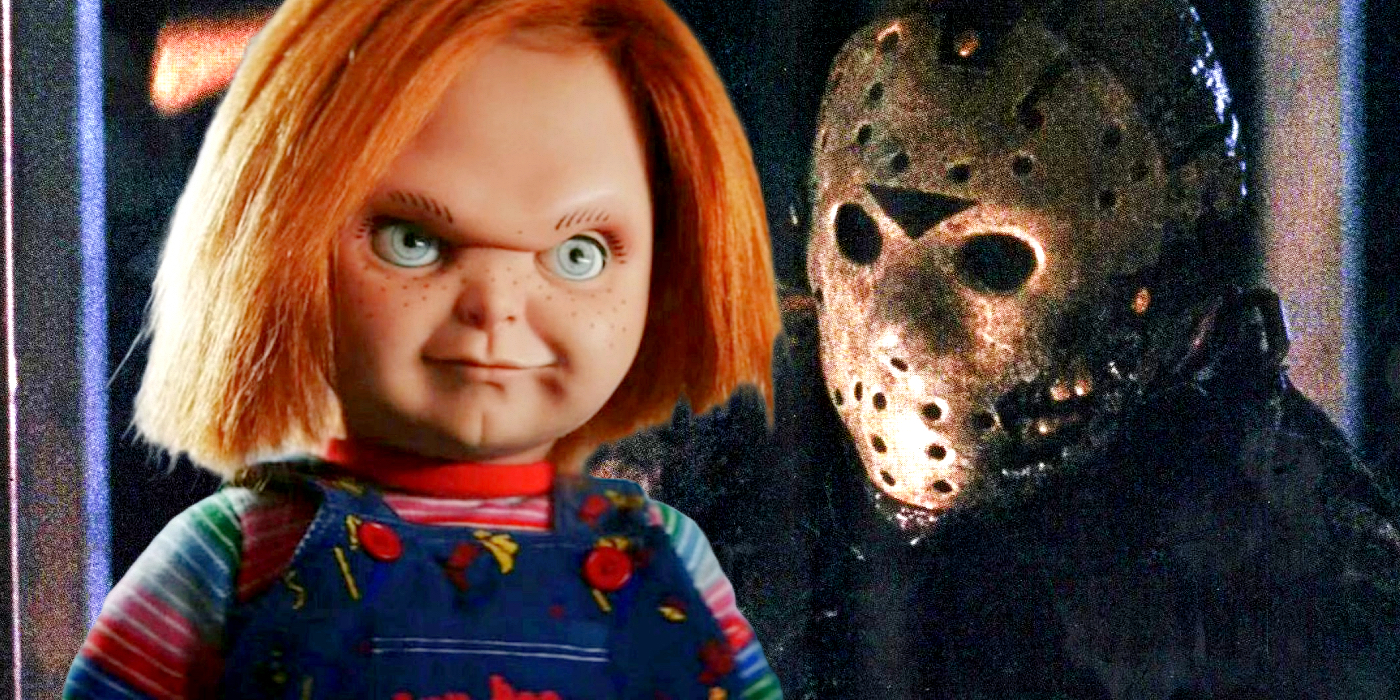
This month at Horror Press, the theme is New Jersey. As a dyed-in-the-wool slasher guy, the first horror-related thing that comes to mind when thinking about the Garden State is obviously the Friday the 13th franchise. The first movie was shot in New Jersey, and the majority of the subsequent movies are set there when they’re not wandering off to Manhattan or space. However, Mrs. Voorhees and her son Jason aren’t the only New Jersey natives to have spawned a slasher franchise.
After all, the bloodthirsty Charles Lee Ray, better known as the killer doll Chucky, grew up in Hackensack. So what do you do when you have two slasher villains on your hands? You have them battle, of course. In order to figure out which killer is the best New Jersey horror icon, we’re going to compare the two in a variety of categories, but the one that will be weighted the heaviest is obviously “New Jersey-ness.” Without any further ado, let the head-to-head begin!
Which Horror Icon is the Most Jersey?
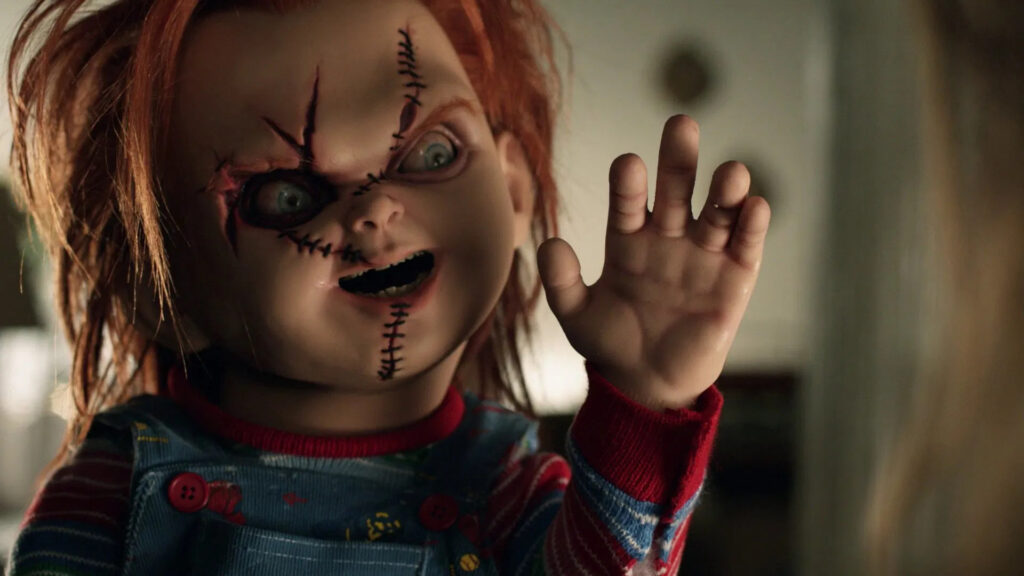
Kill Count
Jason: 179 (give or take)
This total spans 10 movies, including the 2009 reboot, but not the original 1980 Friday the 13th or 1985’s A New Beginning (neither of which feature Jason as the killer). Nor does it include non-body count deaths like the remaining teens on the sunken Lazarus in Jason Takes Manhattan or the entire population of the destroyed Solaris station in Jason X, so if anything, the actual number is even higher than this. This makes for an average of 17.9 per movie.
Chucky: 104 (give or take)
This total spans seven movies and three television seasons. If we count that as a total of 10, Chucky hits an average of 10.4 per outing.
Winner: Jason
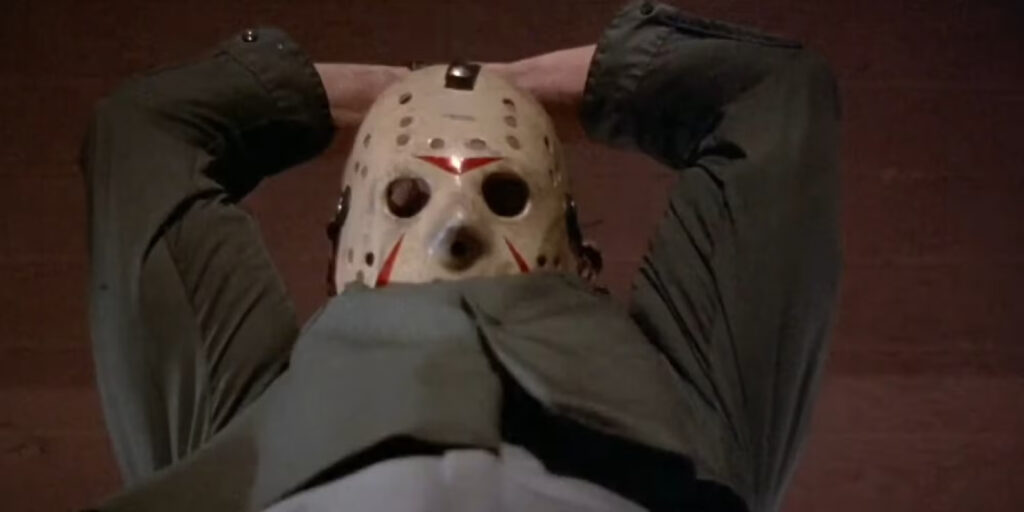
Personality
Jason: He does have a lot of creativity to express when it comes to finding new and exciting ways to turn people’s insides into their outsides. And that hockey mask adds a certain amount of flair, true. But this big lug is the strong and silent type. There’s really not a lot going on with him.
Chucky: The fact that he talks certainly helps him stand out, but regardless, Chucky is all personality from top to bottom, whether it’s the wholesome and child-friendly appearance that he presents to the world when he’s not pursuing his insidious desires or the true self he exposes once you get to know him a little better. He’s narcissistic, bad to the bone, and loves nothing more than wise-cracking while doling out creative kills. He’s also smart enough to design certain murders to cast the blame on others. What a guy!
Winner: Chucky
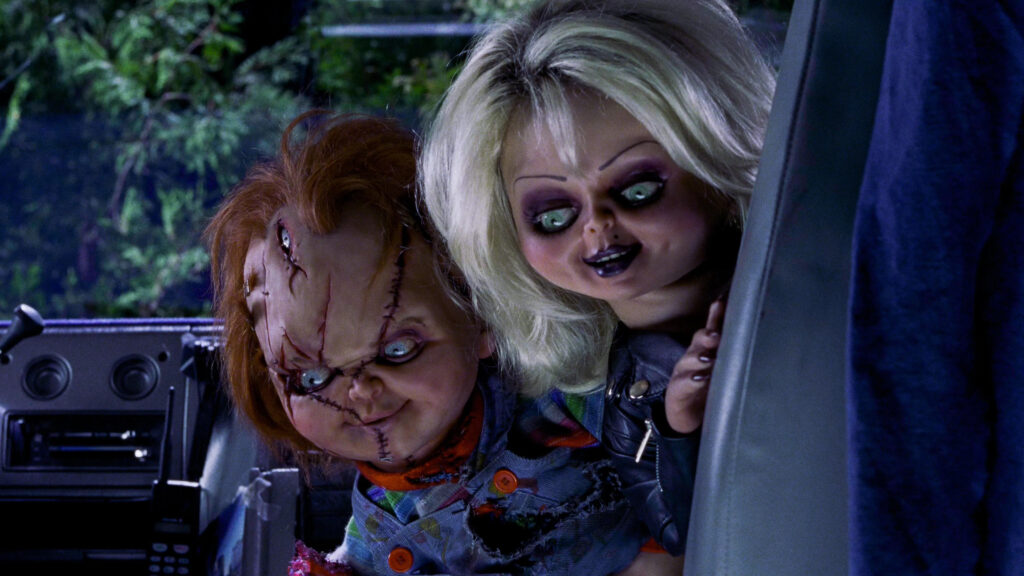
Franchise Quality
Jason: Friday the 13th has some high highs. For instance, The Final Chapter is the platonic ideal of the 1980s slasher movie. However, while the franchise generally tends to be relatively reliable and consistent, those lows can be crushing. Everybody disagrees on which are the lowest, which adds some benefit of the doubt here. Still, whether it’s A New Beginning, Jason Takes Manhattan, Jason Goes to Hell, or Jason X (which is my personal pick), there’s gonna be at least one movie you don’t like here.
Chucky: Not only is the Child’s Play franchise consistent, but it is all in strict continuity (minus the 2019 reboot, which we’re pretending doesn’t exist). It has some glorious highs (Bride of Chucky is one of the iconic 1990s horror movies) and its lows aren’t all that bad. Child’s Play 3 tends to be people’s least favorite, but even that one is a totally watchable, if lightweight, horror romp. (If Seed of Chucky is your lowest-ranked, please come see me after class.)
Winner: Chucky
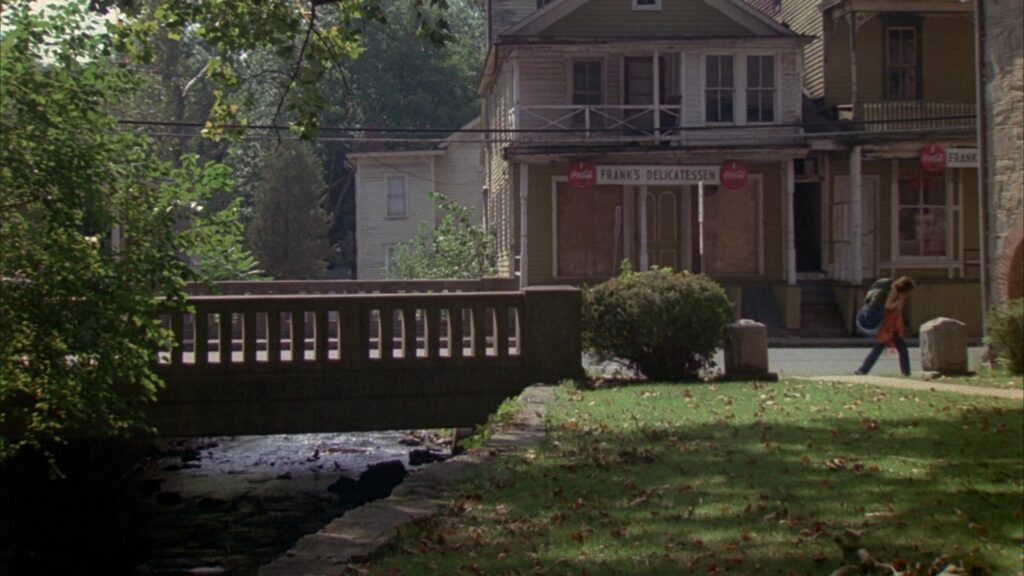
New Jersey-ness
Jason: Now, there’s a lot to break down here, both in-universe and on a meta level. First of all, one huge point goes to Jason because the majority of his slayings are committed in New Jersey. Jason was also canonically born in the small (fictional) town of Crystal Lake, growing up there as well, as shown by the inexplicable Voorhees family manor in Crystal Lake township that appears in Jason Goes to Hell. In fact, beyond going to Manhattan, space, etc., there is no evidence that he has ever left Crystal Lake and its surrounding environs more than a handful of times (mostly for killing – for example, his field trip to take care of original final girl Alice Hardy in Part 2).
However, on a more meta level, very few of the Friday the 13th movies were shot either partially or entirely in New Jersey. They were mostly shot in California, the South, or Canada. Not very Garden State, if you ask me.
Chucky: Chucky gets a huge boost from the fact that he was raised in Hackensack, New Jersey, which is actually a real place as opposed to Crystal Lake township. However, most of his killings from the franchise do not take place in New Jersey. While the Chucky series rectifies this by setting season 1 in Hackensack and featuring the killer doll returning to his hometown in the modern day (alongside flashbacks of his antics as a youngster), his reign of terror has mostly taken place elsewhere. One additional demerit is that, as a human, he was known as the “Lakeshore Strangler,” having taken up residence in Chicago as an adult.
However, while Hackensack is a real place, the Chucky movies and shows don’t shoot there. In fact, as far as I can tell, not a single frame of footage was shot in New Jersey for the entirety of the iconic slasher franchise (which has been produced out of Canada for some time now).
Winner: Jason
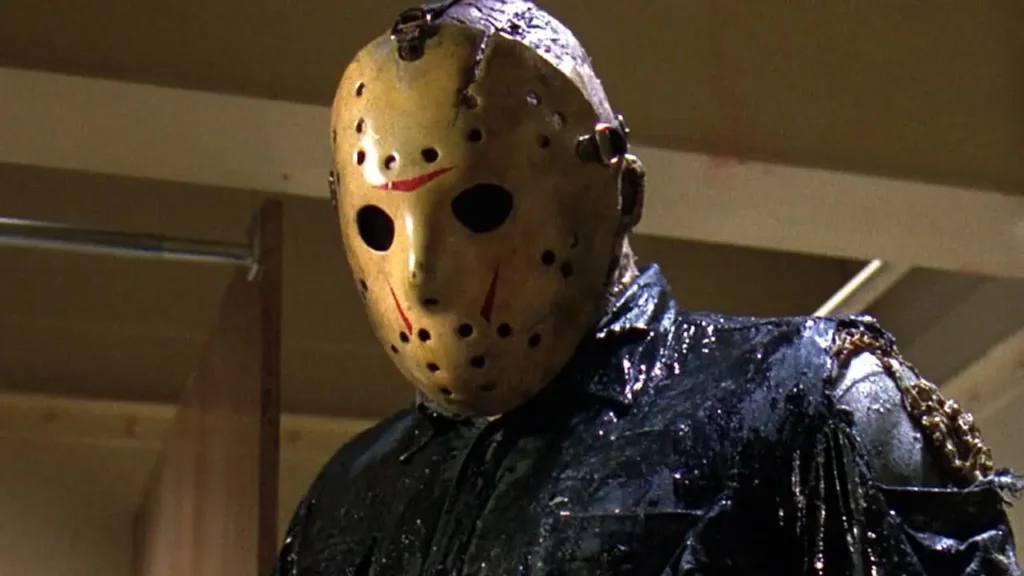
Winner
Because the New Jersey section is weighted to be worth two points, I can proudly proclaim that Jason Voorhees is the winner! While this makes sense, considering the fact that he has been an icon since before Chucky was a twinkle in Don Mancini’s eye, the killer doll put up a tough fight, going neck and bloody neck with the Crystal Lake behemoth.
Misc
[INTERVIEW] Musings on Monstrous Menstruation with the Cast and Crew of ‘The Cramps: A Period Piece’
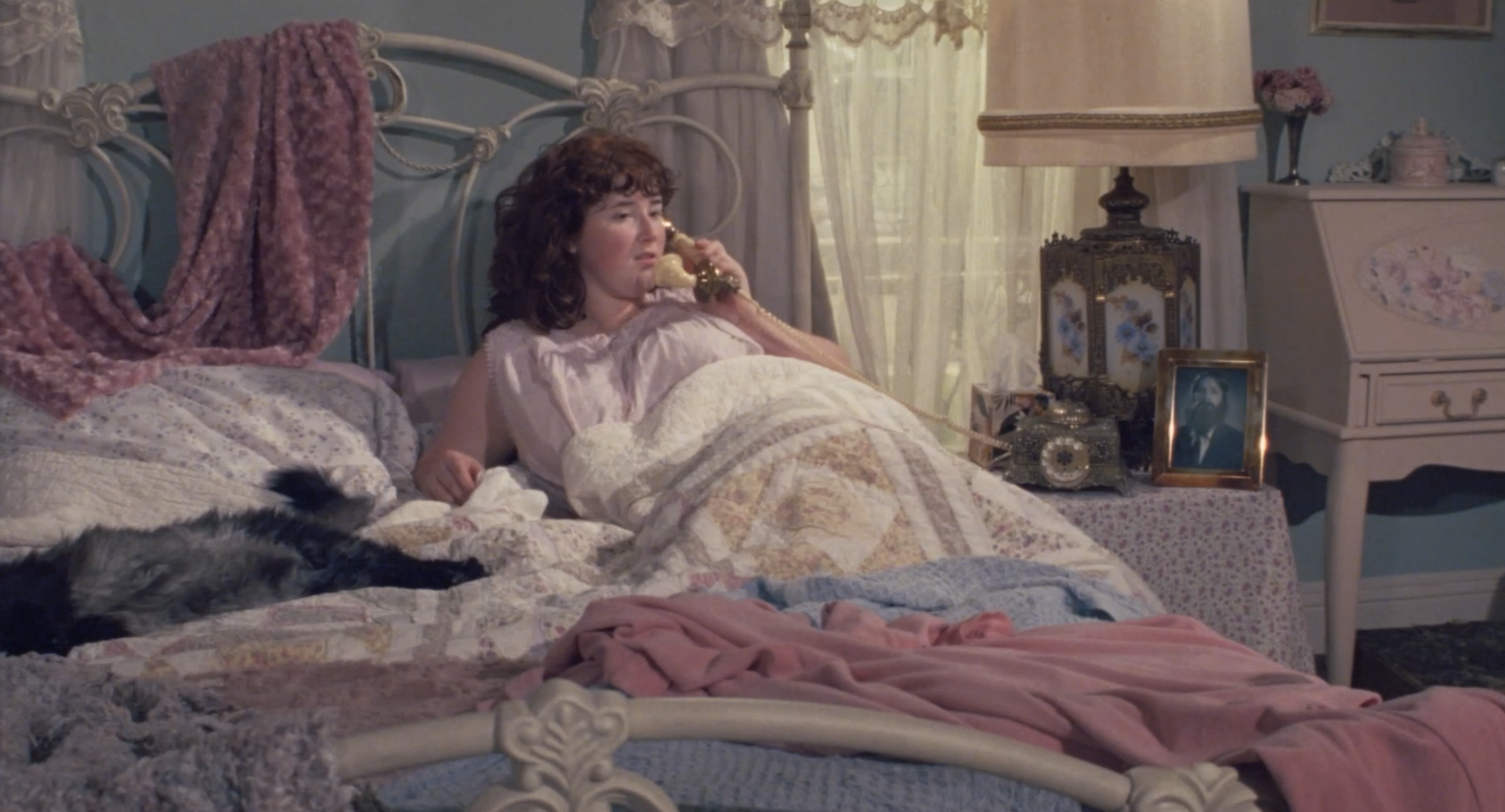
Periods suck. Everyone who menstruates will tell you that, yet this annoying, often painful thing that happens to our bodies for one week out of every month for most of our lives is conspicuously absent from most media. When periods do crop up in horror movies in particular, they tend to be linked to the downfall of the person experiencing them. Writer-director Brooke H. Cellars’ movie The Cramps: A Period Piece is the rare exception.
Inspired by the filmmaker’s own struggles with endometriosis, an underdiagnosed condition that leads to immensely painful periods, The Cramps follows Agnes (newcomer Lauren Kitchen), whose period cramps manifest in strange and monstrous ways. But, crucially, Agnes Applewhite herself is never framed as a monster, just a shy young woman trying to escape her repressive family life and find her place in the world. She gets one step closer after accepting a job offer to be the shampoo girl at a local salon run by Laverne Lancaster (drag queen Martini Bear) and staffed by kooky characters like the prudish Satanist Teddy Teaberry (Wicken Taylor) and the ditzy Christian Holiday Hitchcocker (Michelle Malentina). All the while, Agnes’ cramps are wreaking havoc on the rude men and dismissive doctors that she encounters.
A spiritual successor to the kind of movies John Waters was putting out in the 1970s, The Cramps: A Period Piece is equal parts funny, campy, and heartfelt, bolstered by fun practical effects that horror fans will love. I sat down with Cellars, Kitchen, and Taylor to chat about the future cult classic after its Fantastic Fest 2025 debut.
The following interview has been lightly edited for clarity and conciseness.
An Interview with Director Brooke H. Cellars and Actors Lauren Kitchen and Wicken Taylor of The Cramps: A Period Piece
Samantha McLaren: Brooke, this film is inspired by your own journey with endometriosis. How do you find the humor in what was presumably a difficult situation over many years?
Brooke H. Cellars: Being suppressed and growing up with no friends, I had to figure out my own way in life. And when people would make fun of me, I kind of had to develop a thicker skin through humor. That was the only way I could get through—by making light of things, or trying to make people laugh, being the weirdo, saying stupid things. That’s how I connected with people, just being ridiculous with each other. And it grew to where I actually had a sense of humor.
I guess that’s kind of like a mask in dealing with what’s actually going on, my family life or being in pain… So when I wrote the story, it came naturally. I didn’t want to make it scary, because it’s scary in real life. I wanted something entertaining but meaningful, and to connect with people in a way where they can be outspoken and it’s okay. I want it to be cathartic for them, and to maybe make them forget for a little while, but also feel a place of warmth in a horror movie where they least expect something.
It’s so rare to see any horror film about periods, but especially one that isn’t about the abjection of periods. I’m curious how you approached making it funny but not at the expense of people who menstruate, while also finding the horror and making it a positive, uplifting story.
BHC: When I started making short films, I just wanted to make a slasher, because I love old, 1970s slashers. So when we made [“The Chills,” Cellars’ first short from 2019] for no money in my house with my husband and his sisters, who are not actors, I knew I wanted to make scary stuff, but I didn’t know I wanted to say something else. It does say something, but I didn’t do that intentionally—I was just trying to make a scary movie, but it’s like something was trying to come out of me.
It came out when we finally made Violet Butterfield: Makeup Artist for the Dead (2022), which is kind of set in the same world as The Cramps. We shot it on film and kind of developed the world, and just put more intention into it and more of myself, my story, and being finally honest about what’s going on. At the same time, I had stopped talking to my family. I was finally living my life in my late 30s and got into filmmaking, as I’d wanted since I was a kid and never thought would happen. I just said, fuck it—this is what I’ve always wanted to do, I’m running with it, and I’m doing what I want now. I knew the story I wanted to tell, because I was still going through it while I was writing the script. I was having my hysterectomy. Finally, somebody was helping me with my endometriosis, after like 15,000 doctors told me “sorry.”
Lauren, this is your first role—how did you come to be involved in the project, and what drew you to the script?
Lauren Kitchen: I knew Holiday, played by Michelle [Malentina], and I knew Pussy D’Lish [Jude Ducet], who played Clydia. We had just done a community theater production of Rent together. And I followed Brooke… I was a fan of “Violet Butterfield” and the whole aesthetic, so I wanted to follow up on their Instagram. And then I saw an audition announcement for The Cramps, and I just loved it—it had the sixties florals, so cute. I’ve always been told I’m like an old soul, so I was like, I should go for it.
I remember saying to Jude that I really relate to the main character, but I probably won’t get it, I don’t have the experience. I went into in-person auditions fully thinking, “I’m not gonna get it, but at least I’ll give myself a pat on the back for doing it.” And it turns out, when you go in thinking you won’t get it, you get it!
Wicken Taylor: She killed.
LK: Everyone was so supportive, and having done stage acting and studying it in school helped to bridge the gap between stage and film. There are times when you have to make adjustments. I love the subtleties of film. On stage, you’re acting for the back row, but then in film, you can do something as subtle as an eye movement that you can say so much.
You being new to film brought something so interesting to the role, because there’s that vulnerability—you’re finding your confidence in a way that mirrors Agnes’ journey.
LK: Agnes is finding herself and her chosen family, and I’m also finding Lauren and my confidence through it.
There are so many references and visual homages in the film—obviously John Waters, but also The Tingler, and so many films that I grew up loving. I’m curious if Brooke gave you all homework to watch?
LK: I watched Peeping Tom.
WK: And The Red Shoes. Blood and Black Lace. And she had me watch [The Jerk] because Bernadette Peters was an inspiration for Teddy, and then also Grease for Frenchy.
LK: Female Trouble. And I watched Cry-Baby too for Johnny Depp.
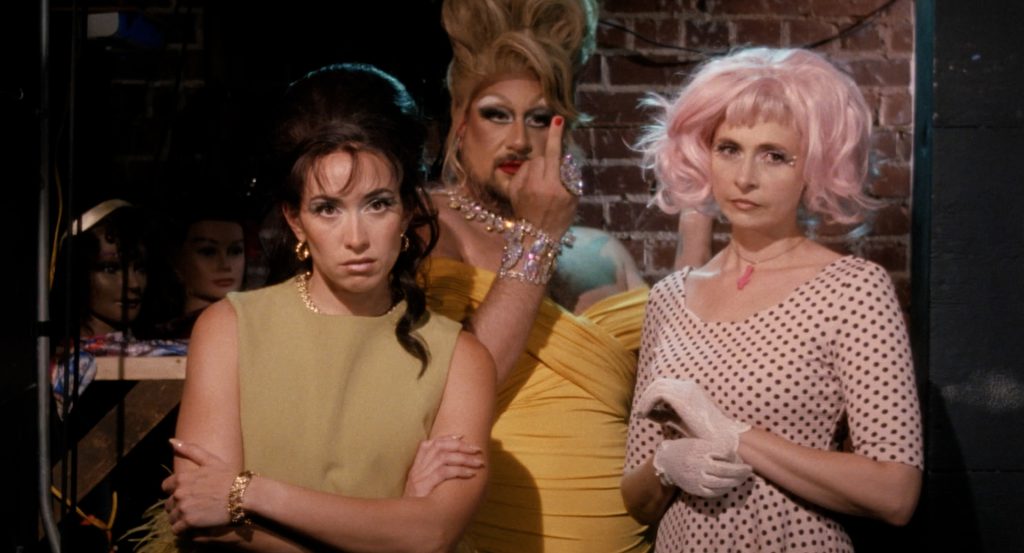
One thing that drew me to The Cramps is that there’s so much drag talent in the film—drag kings as well as queens, and bearded queens, which you don’t often see. It was subversive when John Waters featured drag performers in his films in the 1970s, and it has somehow looped back around to being subversive again. Brooke, how important was it for you to have that queer element in this story?
BHC: Very important. My own family never accepted me for anything, and that’s why things were so confusing. I always thought I had a normal family, and I definitely didn’t have a normal family. They treated me as if I wasn’t normal. Of course, I wasn’t, but it was okay—I just didn’t know it was okay to be who I was. I didn’t have a lot of friends, and even my brothers and sisters bullied me; my parents bullied me. I was bullied till I was a senior, and even when I was an adult.
Nobody was embracing me. I came from a very small conservative town and a conservative family, so I was always ashamed to be me, even though I couldn’t stop being me. […] It was when I moved away from home to the “big city” of Lafayette, Louisiana [laughs], I started waiting tables and stuff, just doing my own thing, and it was the queer community that I was always told “don’t talk to those people”… these are the people that told me it’s okay to be me. They had so much confidence that I wanted to have. They accepted me, they supported me. They made it so comfortable to just be myself. […] I think a chosen family is very important, and I wanted to celebrate them along with what I’m going through. They’re a part of me.
The hair salon feels like the perfect encapsulation of that chosen family, full of weirdos who found each other. Speaking of, I want to talk about Teddy, because I’m obsessed with Teddy. Wicken, how did you find the right tone for that character who is the perfect subversion of the typical church lady, but also so deadpan, and so kind?
WT: Brooke writes amazing characters. I was like, what do you mean? And she said, “darkness is goodness.” So I took that away and I interviewed a Satanist, and I was doing research, but because this is not our world, it’s a fantastical world that Brooke created, I had so much freedom. So, what is Satanism to Teddy? And what I love so much about her is that we can see that she’s a good person—it just kind of radiates from her. She embodies the idea that it’s okay to be you, that you are loved, and that you are one of us, and that you are safe.
One of my most favorite things about the relationships in the film is that Holiday and Teddy are best friends. Holiday is a Christian—a cursing Christian—and Teddy is a prude Satanist, and they’re best friends.
How did you build the aesthetic for the film? It picks and chooses from a lot of different decades, but still feels like a cohesive pocket universe.
BHC: It’s very difficult to explain things inside my head. I’ve been working with Levi [Porter, director of photography] and Madeleine [Yawn, producer] since the beginning of time. Like, every single movie we’ve made together, and so they can decipher my language and what I mean.
But when I’m creating these worlds, I’m not very fixated on one thing, like “it has to be horror!” I wanted to really intentionally make a movie of all kinds of genres and blend them together, because they’re coming from one place, even though they’re different. I’m just giving how I view the world, and yeah I take from different decades, different movies, and they’re all the same love to me.
The Cramps: A Period Piece celebrated its world premiere at Fantastic Fest 2025. Keep an eye out for its wider release, because this is not one to miss.
Misc
John Massari’s Re-Recorded Score Revealed at Night Frights LA
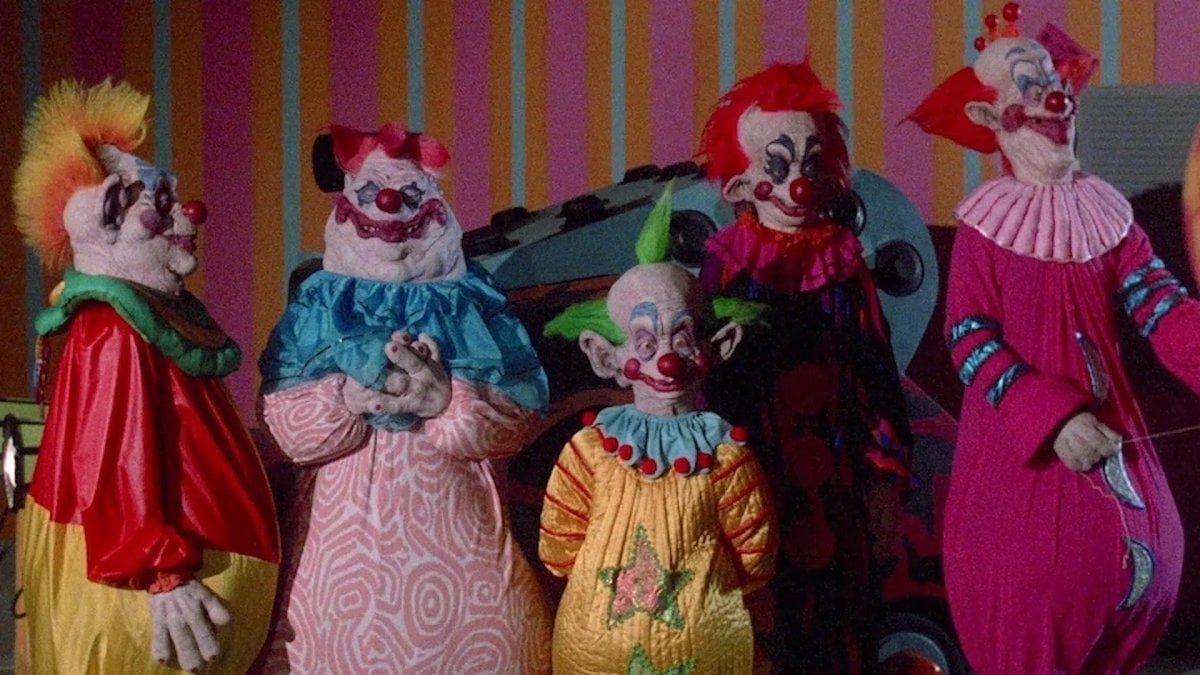
Killer Klowns from Outer Space is one of horror’s most prominent, bona fide classics. But what kind of horror fan does it make me that it wasn’t until Night Frights LA that I had the chance to watch it finally? I knew a lot about this film, but my general distaste for horror comedies overrode any box I needed to check to be considered a “horror fan.” When I heard that Horror Press was sponsoring a screening of Killer Klowns at Night Frights LA with composer John Massari in attendance, I figured, what better time than now to check it out!
Falling in Love with John Massari’s Killer Klowns Soundtrack
I listened to the soundtrack on the flight out to LA, and I loved it. There’s this brilliant mixture between camp and terror that brings an uncomfortable levity to it. Seeing it finally overlaid on the film just amplified how incredible an artist John Massari truly is. Getting to hear him talk about this project was truly enlightening, both as a new fan of his and as a creative.
John stated involvement in the project came on the wings of a friend. He was bopping around between commercial projects when a friend mentioned that someone they knew (the Chiodos) was making a film. So, John sent some of his compositions as an audition and eventually was able to get a (scoreless) screening of the film at Warner Bros. Studios. Music is an integral part of film, and a part of my brain can’t even fathom watching a film without a score. But it was the scene where the tent in the forest was found that solidified John’s love for this project.
Inside the Creative Process: Scoring Killer Klowns’ Marching Scene
How exactly does a composer go about their work? For John Massari, part of Killer Klowns was with him his whole life. The scene in which the klowns are marching into town would eventually be scored with a composition he wrote when he was in high school! He wrote the composition for his band, but they deemed it too jazzy and refused to play it. It would later come to light that John was awarded the composition job from that piece alone.
Massari seems like an incredibly down-to-earth guy who knows what he wants out of life. That part of his story really stuck with me. “Not everything you do is going to be accepted immediately by everyone. That doesn’t mean you have to discard it,” he said.
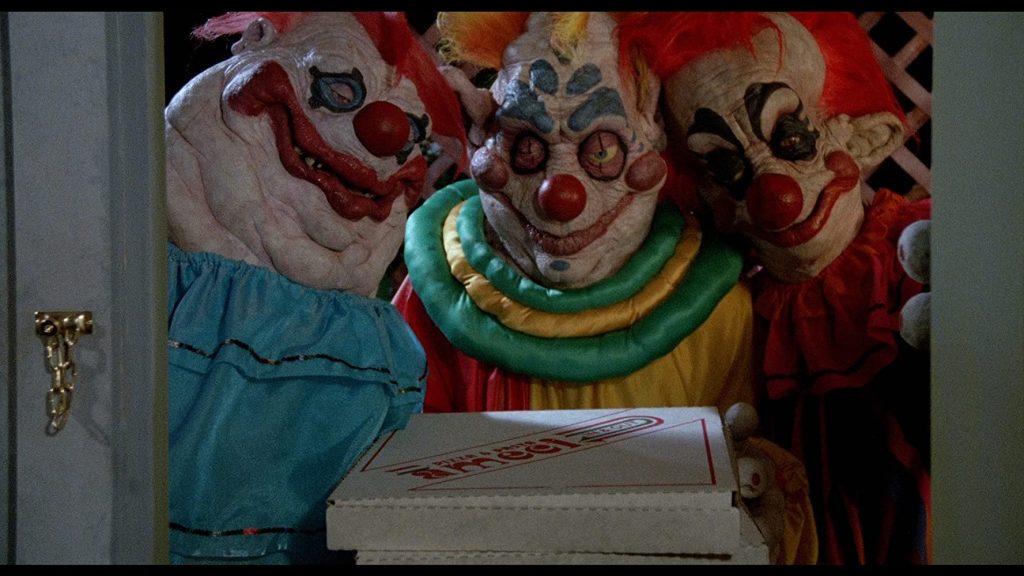
Crafting the Full Killer Klowns Score: References and Storytelling
When it finally came to creating the full composition for the film, it seems he had fairly free rein to do what he wanted. Although the Chiodos did stick their hands in the pot a few times. They made John aware of certain films they wanted him to avoid when pulling reference for his work. Some of these films, John clarified, are what we consider classics today. John’s final composition for the film tells a story of its own; rarely do you hear a score that tells its own front-to-end story. The spaceship, he said, was viewed as a princess’s castle while the klowns marching into town were meant to resemble tanks driving into Poland.
One of the most interesting stories John regaled was about a significant roadblock that occurred toward the end of production. Someone from the production side requested that John be the one to pay for the film’s Dolby Stereo licensing fee. Thankfully, John and the Chiodos shot that down quickly. You wouldn’t ask the cinematographer to pay for film processing fees, would you?
John Massari’s Enduring Pride in Killer Klowns from Outer Space
It’s clear that he has ALWAYS been proud of his work on Killer Klowns from Outer Space. Even when friends told him that maybe he shouldn’t tell people he worked on it. However, around 2010/2012, he noticed a shift in thought regarding the film. The sands shifted from viewing Killer Klowns as “so bad it’s good” (my words) to just a pretty darn good film. After finally getting to watch it, I agree.
Massari revealed something that got the entire crowd amped up…he’s re-recorded the score. COVID was a hell of a time for all of us. While most of us were drinking and playing video games, John was making art. He didn’t change the score; he just made it fuller. And he promises that the rescored composition still goes with the version of the film we’ve all seen and doesn’t change the overall tone or feeling.
New Killer Klowns Soundtrack and Screenings
Thankfully, there is a record company (not Waxwork) that is interested in releasing the new composition to the world. At some point, we can hope for a CD and a streaming release. But maybe there’s a chance for some limited screenings to pop up with the rescored composition!
Thanks to John Massari and the Night Frights crew for making this day and event happen. Watching Killer Klowns from Outer Space with John in attendance was a bucket list item I didn’t even know was on my list! Do yourself a favor, don’t waste 31 years of your life not seeing this movie. If you haven’t…do it!























